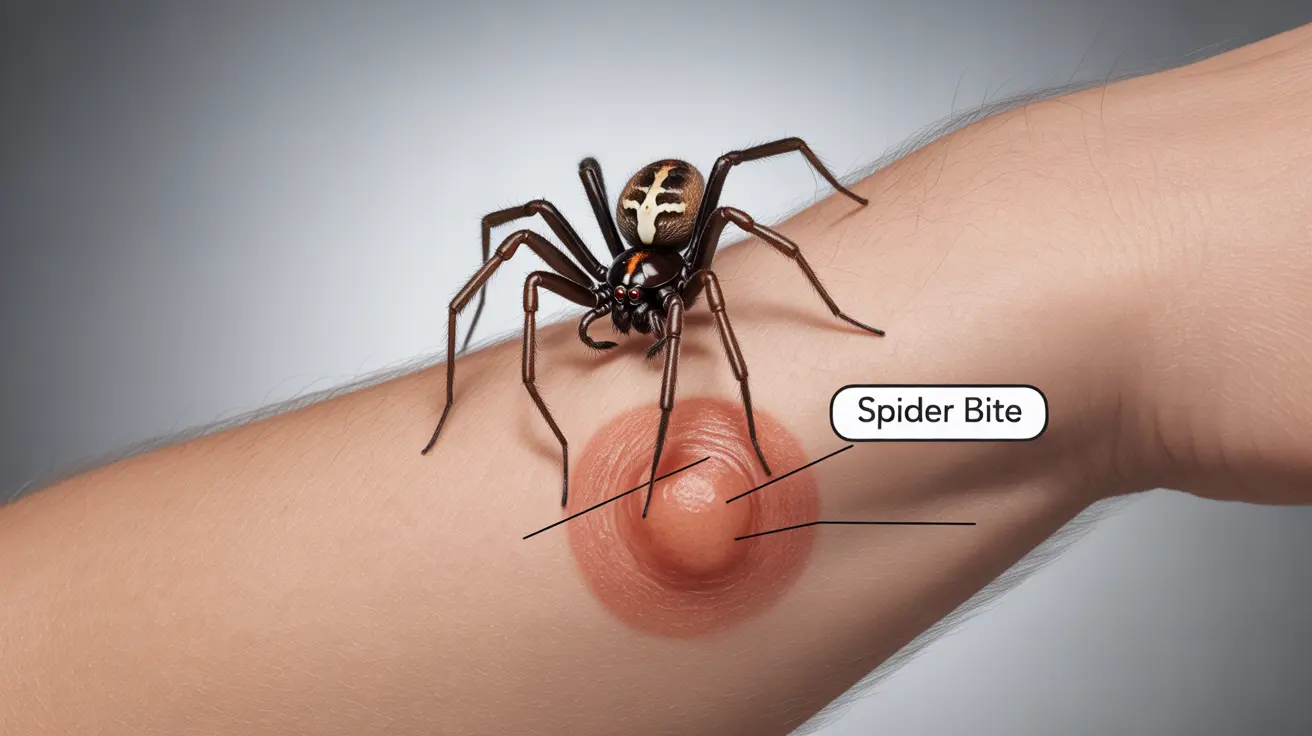Brown widow spiders, while less notorious than their black widow cousins, can deliver painful and potentially dangerous bites that require careful attention. Understanding the symptoms, proper treatment approaches, and prevention methods is crucial for anyone living in areas where these spiders are common.
This comprehensive guide will help you identify brown widow spider bites, understand when to seek medical attention, and learn effective prevention strategies to keep yourself and your family safe.
Identifying Brown Widow Spider Bites
Brown widow spider bites often present with distinct characteristics that set them apart from other spider bites. Initial symptoms typically include:
- Sharp pain at the bite site
- Two small puncture marks
- Localized redness and swelling
- Muscle cramping near the affected area
While brown widow venom is considered less potent than black widow venom, their bites should still be taken seriously and monitored carefully for developing symptoms.
Immediate Treatment Steps
If you suspect you've been bitten by a brown widow spider, taking prompt action can help manage symptoms and prevent complications:
- Clean the bite area thoroughly with soap and water
- Apply a cold compress to reduce swelling
- Keep the affected limb elevated if possible
- Document the time of the bite and symptom progression
Avoid applying tourniquets or attempting to extract the venom, as these methods can cause more harm than good.
When to Seek Medical Care
While many brown widow spider bites can be managed at home, certain situations require immediate medical attention:
- Severe pain that continues to worsen
- Spreading redness or warmth around the bite
- Development of fever or chills
- Difficulty breathing or chest pain
- Severe muscle cramping or spasms
These symptoms may indicate a more serious reaction that requires professional medical intervention.
Prevention Strategies
Preventing brown widow spider bites involves both habitat management and personal awareness:
- Regular inspection of outdoor furniture and equipment
- Wearing gloves when working in gardens or storage areas
- Sealing entry points around windows and doors
- Removing cluttered areas where spiders might hide
- Maintaining clean, organized storage spaces
Comparing Brown and Black Widow Bites
Understanding the differences between brown and black widow bites can help in proper identification and treatment:
Venom Potency
Brown widow venom is generally less potent than black widow venom, though both require careful monitoring.
Symptom Progression
Brown widow bite symptoms typically develop more gradually and may be less severe than black widow bites, which often cause intense pain and systemic reactions more quickly.
Frequently Asked Questions
What are the common symptoms of a brown widow spider bite?
Common symptoms include immediate sharp pain, two small puncture marks, localized redness and swelling, and possible muscle cramping in the affected area. Symptoms are typically less severe than black widow bites but should still be monitored carefully.
How should I treat a brown widow spider bite at home?
Clean the bite area with soap and water, apply a cold compress to reduce swelling, keep the affected area elevated, and monitor symptoms. Over-the-counter pain relievers can help manage discomfort. Avoid traditional folk remedies or attempting to extract the venom.
What is the difference between a brown widow bite and a black widow bite?
Brown widow bites generally cause less severe symptoms and develop more gradually than black widow bites. While both contain neurotoxic venom, brown widow venom is less potent, typically resulting in more localized symptoms rather than severe systemic effects.
When should I seek medical help after a brown widow spider bite?
Seek immediate medical attention if you experience severe pain that worsens over time, spreading redness or warmth around the bite, fever, difficulty breathing, chest pain, or severe muscle cramping or spasms.
How can I prevent brown widow spider bites around my home?
Prevent bites by regularly inspecting outdoor areas, wearing protective clothing when gardening, sealing potential entry points, removing spider-friendly hiding spots, and maintaining clean, organized storage spaces. Professional pest control services can also help manage spider populations.




